辊压成型与折弯机定义及操作
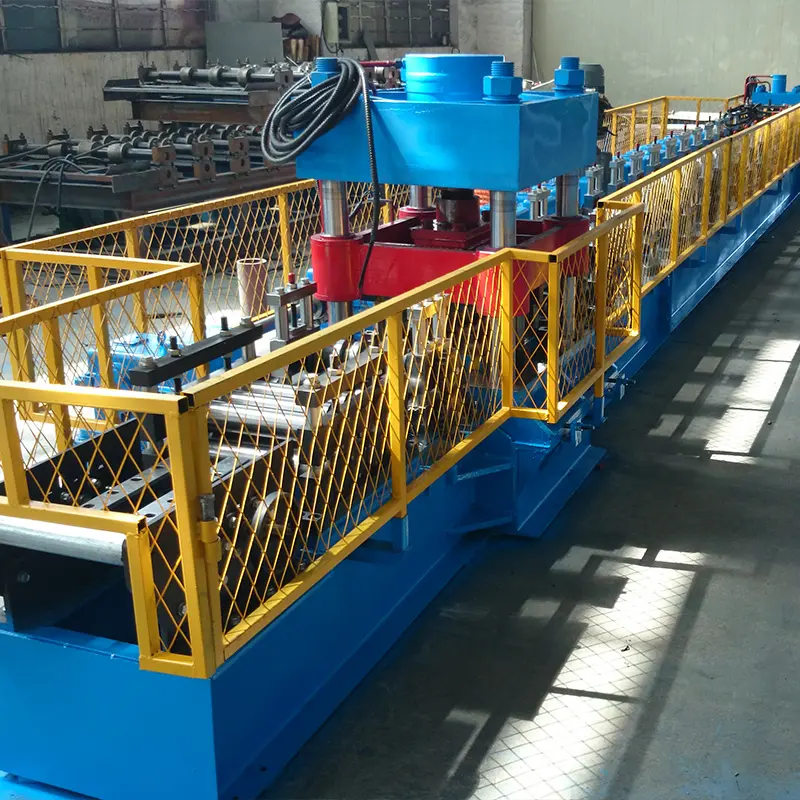
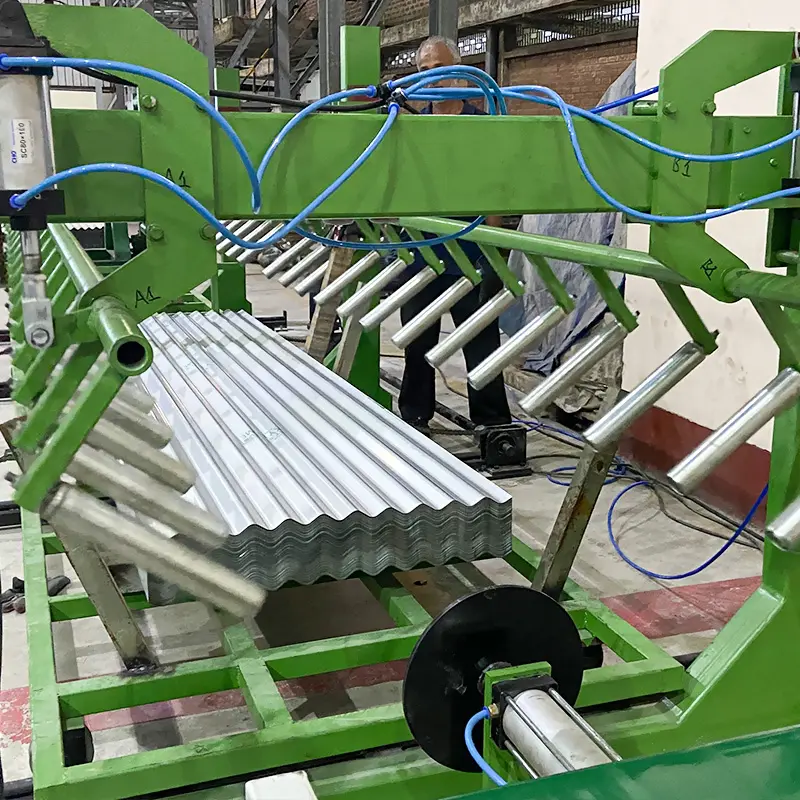
辊压成型机和折弯机均为金属加工行业常用设备,用于将金属板材成型为所需形状和尺寸。下面简要说明每种机器及其工作原理:
辊压成型是一种连续工艺,通过一系列辊轮将金属条带或板材弯曲成特定形状。辊轮设计具有渐增轮廓,逐步弯曲并成型金属条带至所需形状。该机器可创建复杂形状和型材,常用于建筑、汽车和家电行业的部件生产。
折弯机:
ए press brake 是一种机床,用于将金属板材弯曲成型为各种形状,如角铁、槽钢和箱体。该机器利用液压或机械压力机对金属板施加力,实现所需弯曲。折弯机可处理多种材料和厚度,常用于金属加工车间,适用于金属成型、切割和冲孔等应用。
总之,辊压成型机利用一系列辊轮连续弯曲金属条带成形,而折弯机则使用液压或机械压力机将金属板弯曲成各种形状。
辊压成型的优缺点
-
 विद्युत कैबिनेट फ्रेम रोल बनाने की मशीन
विद्युत कैबिनेट फ्रेम रोल बनाने की मशीन -
 दीन रेल रोल बनाने की मशीन
दीन रेल रोल बनाने की मशीन -
 केबल सीढ़ी रोल बनाने की मशीन
केबल सीढ़ी रोल बनाने की मशीन -
 पीवी माउंटिंग ब्रैकेट सी शेप प्रोफाइल रोल बनाने की मशीन
पीवी माउंटिंग ब्रैकेट सी शेप प्रोफाइल रोल बनाने की मशीन -
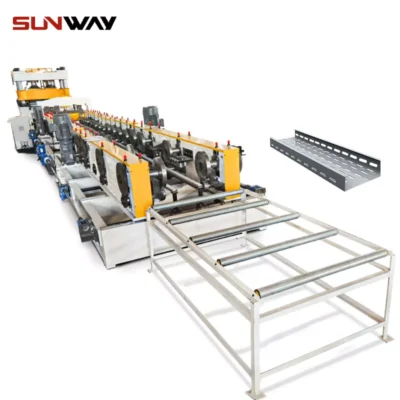 केबल ट्रे रोल बनाने की मशीन
केबल ट्रे रोल बनाने की मशीन -
 पीवी माउंटिंग ब्रैकेट रोल बनाने की मशीन (एचएटी / ओमेगा प्रोफाइल)
पीवी माउंटिंग ब्रैकेट रोल बनाने की मशीन (एचएटी / ओमेगा प्रोफाइल) -
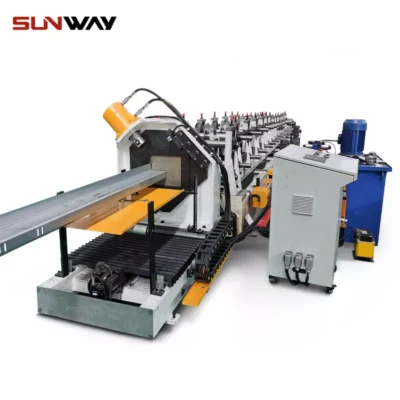 पीवी माउंटिंग ब्रैकेट जेड शेप प्रोफाइल रोल बनाने की मशीन
पीवी माउंटिंग ब्रैकेट जेड शेप प्रोफाइल रोल बनाने की मशीन -
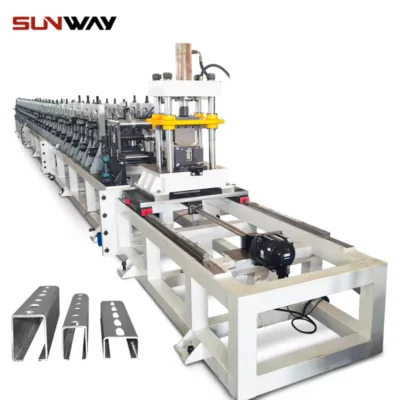 सौर बढ़ते अकड़ चैनल रोल बनाने की मशीन
सौर बढ़ते अकड़ चैनल रोल बनाने की मशीन -
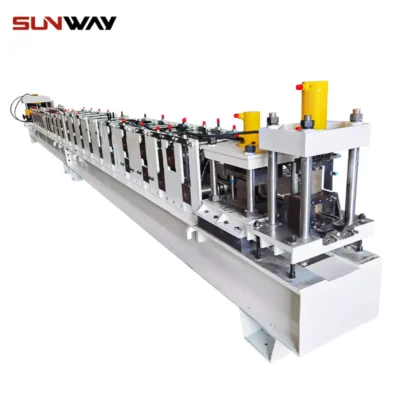 स्ट्रट चैनल रोल बनाने की मशीन
स्ट्रट चैनल रोल बनाने की मशीन
在决定辊压成型机是否适合特定需求前,需考虑其多项优势与劣势。以下是使用该机器的主要益处与缺点:
辊压成型的优势:
- 高效率:机器可快速连续生产复杂形状和型材,非常适合大批量生产。
- 一致品质:机器以生产公差紧、变异小的稳定高质量零件著称。
- 材料浪费少:机器通常产生极少废料,有助于降低材料成本和浪费。
- 劳动力成本低:机器高度自动化,仅需少量人工,从而降低劳动力成本。
辊压成型的缺点:
- 初始设置成本高:机器设置昂贵,需要专用模具,设计与制造耗时耗资。
- 灵活性有限:最适合一致形状的大批量生产,不宜用于小批量或定制项目。
- 材料厚度受限:通常适用于薄规格材料,不适合较厚材料。
- 设计选项有限:生产复杂设计和形状的能力受限。
总之,该机器提供高效率、一致品质、少废料和低劳动力成本,但初始设置成本高、灵活性有限、材料厚度受限且设计选项少。
折弯机的优缺点

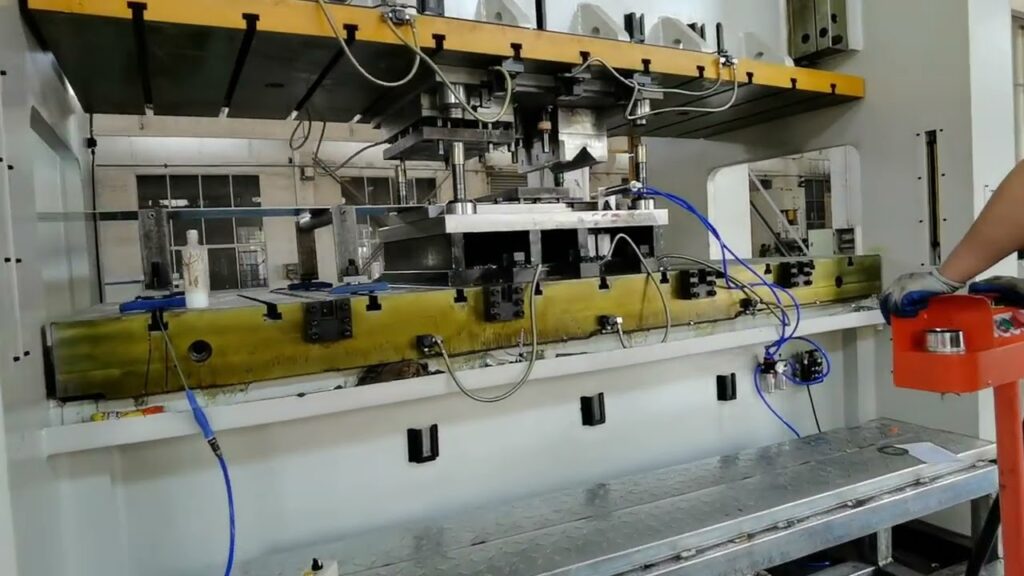
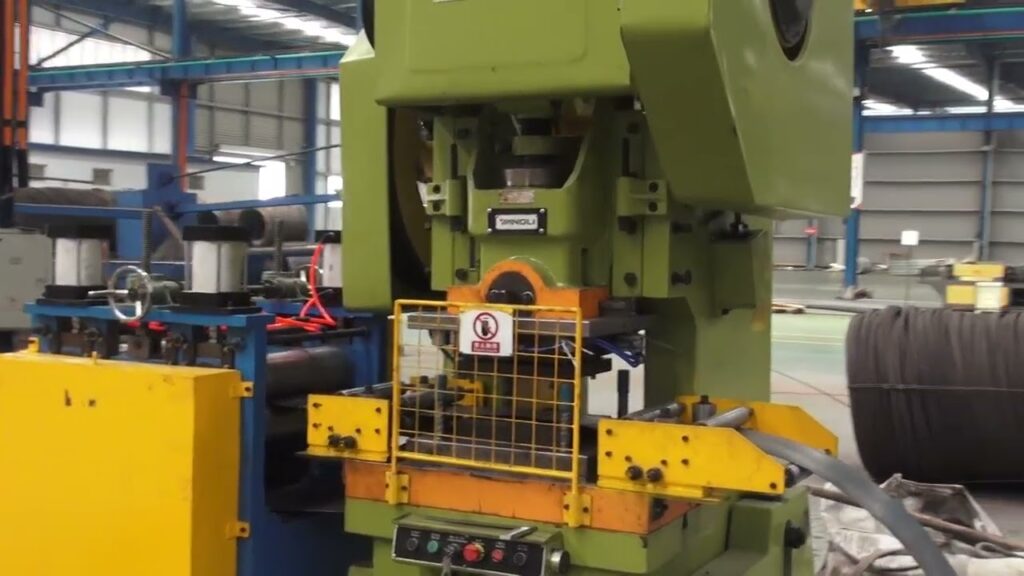
在决定折弯机是否适合特定需求前,需考虑其多项优势与劣势。以下是使用折弯机的主要益处与缺点:
折弯机的优势:
- 多功能性:折弯机可处理多种材料和厚度,适用于各种应用。
- 定制化:折弯机可创建定制形状和型材,理想用于小批量和定制项目。
- 灵活性:折弯机比辊压成型机更灵活,可生产更广泛的形状和型材。
- 成本效益高:折弯机通常比辊压成型机更实惠,适合中小型企业。
折弯机的缺点:
- 效率较低:折弯机设置和操作需更多人工,不如辊压成型机高效。
- 材料浪费多:折弯机产生的废料多于辊压成型机,增加材料成本和浪费。
- असंगत गुणवत्ता: प्रेस ब्रेक मशीन द्वारा निर्मित भागों की गुणवत्ता रोल फॉर्मिंग मशीन द्वारा निर्मित भागों की तुलना में अधिक भिन्न हो सकती है।
- स्थान की आवश्यकताएँ: प्रेस ब्रेक मशीनों को संचालित करने के लिए आमतौर पर रोल फॉर्मिंग मशीनों की तुलना में अधिक स्थान की आवश्यकता होती है।
संक्षेप में, प्रेस ब्रेक मशीनें बहुमुखी प्रतिभा, अनुकूलन, लचीलापन और लागत प्रभावशीलता प्रदान करती हैं, लेकिन वे रोल फॉर्मिंग मशीनों की तुलना में कम कुशल हो सकती हैं, अधिक सामग्री अपशिष्ट उत्पन्न कर सकती हैं, असंगत गुणवत्ता वाली हो सकती हैं और संचालन के लिए अधिक स्थान की आवश्यकता हो सकती है।
रोल फॉर्मिंग और प्रेस ब्रेक्स के अनुप्रयोग
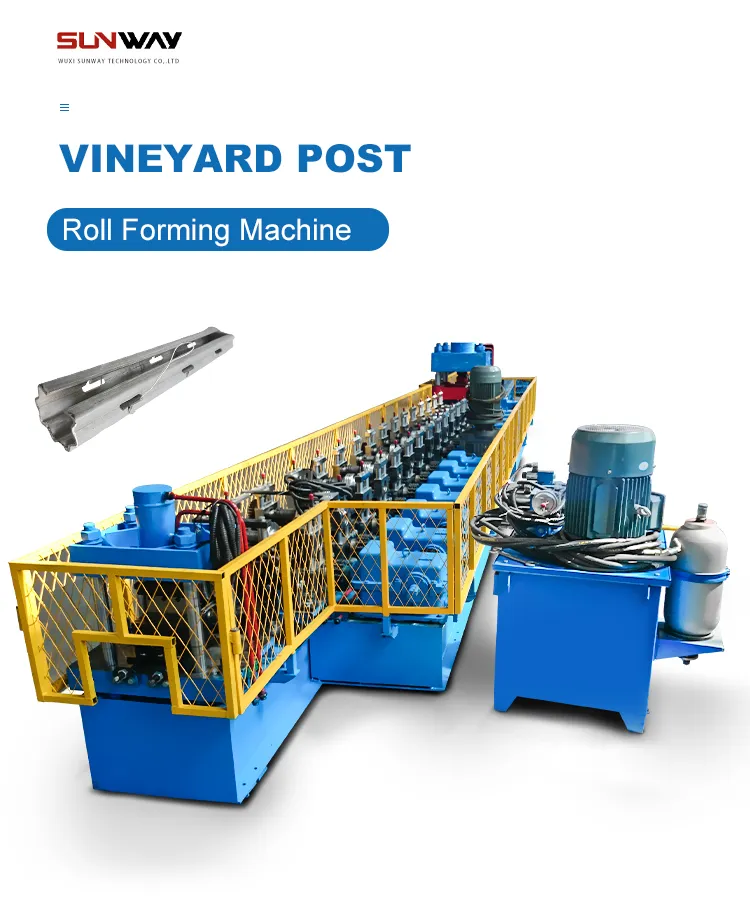
रोल फॉर्मिंग और प्रेस ब्रेक मशीनें धातु कार्य उद्योग में विभिन्न अनुप्रयोगों में उपयोग की जाती हैं। यहाँ इन मशीनों के सामान्य उपयोग के कुछ विशिष्ट अनुप्रयोग दिए गए हैं:
रोल फॉर्मिंग मशीनों के अनुप्रयोग:
- ऑटोमोटिव उद्योग: ये मशीनें ऑटोमोबाइल्स के लिए डोर फ्रेम, सीट ट्रैक और बम्पर बीम जैसे घटकों का उत्पादन करने के लिए उपयोग की जाती हैं।
- निर्माण उद्योग: ये मशीनें भवनों के लिए धातु छतें और साइडिंग, खिड़की फ्रेम और गटर जैसे घटकों का उत्पादन करने के लिए उपयोग की जाती हैं।
- उपकरण उद्योग: ये मशीनें घरेलू उपकरणों के लिए रेफ्रिजरेटर डोर फ्रेम, ओवन रैक और वॉशर/ड्रायर घटकों जैसे घटकों का उत्पादन करने के लिए उपयोग की जाती हैं।
- शेल्विंग और भंडारण उद्योग: ये मशीनें धातु शेल्फ, भंडारण रैक और फाइलिंग कैबिनेट जैसे घटकों का उत्पादन करने के लिए उपयोग की जाती हैं।
- सौर पैनल उद्योग: ये मशीनें सौर पैनलों के लिए रैकिंग सिस्टम और माउंटिंग ब्रैकेट जैसे घटकों का उत्पादन करने के लिए उपयोग की जाती हैं।
प्रेस ब्रेक मशीनों के अनुप्रयोग:
- धातु निर्माण: प्रेस ब्रेक मशीनें धातु निर्माण कार्यशालाओं में विभिन्न अनुप्रयोगों के लिए कस्टम आकार और प्रोफाइल बनाने के लिए उपयोग की जाती हैं।
- धातु एनक्लोजर: प्रेस ब्रेक मशीनें विद्युत उपकरण, मशीनरी और अन्य औद्योगिक अनुप्रयोगों के लिए धातु एनक्लोजर बनाने के लिए उपयोग की जाती हैं।
- धातु ब्रैकेट: प्रेस ब्रेक मशीनें ऑटोमोटिव, एयरोस्पेस और निर्माण सहित विभिन्न अनुप्रयोगों के लिए धातु ब्रैकेट बनाने के लिए उपयोग की जाती हैं।
- साइनेज उद्योग: प्रेस ब्रेक मशीनें भवन साइनेज, दिशा निर्देश साइनेज और सुरक्षा साइनेज जैसे विभिन्न अनुप्रयोगों के लिए धातु संकेत बनाने के लिए उपयोग की जाती हैं।
- फर्नीचर उद्योग: प्रेस ब्रेक मशीनें टेबल, कुर्सियाँ और शेल्विंग जैसे फर्नीचर के लिए धातु फ्रेम बनाने के लिए उपयोग की जाती हैं।
संक्षेप में, रोल फॉर्मिंग मशीनें ऑटोमोटिव, निर्माण, उपकरण, शेल्विंग और भंडारण तथा सौर पैनल उद्योगों में सामान्य रूप से उपयोग की जाती हैं, जबकि प्रेस ब्रेक मशीनें धातु निर्माण, धातु एनक्लोजर, धातु ब्रैकेट, साइनेज और फर्नीचर उद्योगों में सामान्य रूप से उपयोग की जाती हैं।
रोल फॉर्मिंग और प्रेस ब्रेक मशीनों के बीच चयन करते समय विचार करने योग्य कारक
किसी विशिष्ट अनुप्रयोग के लिए रोल फॉर्मिंग या प्रेस ब्रेक मशीनों का उपयोग करने का निर्णय लेते समय, कई कारकों पर विचार करना आवश्यक है। यहाँ कुछ प्रमुख कारक दिए गए हैं जिन्हें ध्यान में रखना चाहिए:
- उत्पादन मात्रा: रोल फॉर्मिंग मशीनें सुसंगत आकार और प्रोफाइल की उच्च मात्रा उत्पादन रनों के लिए आदर्श हैं, जबकि प्रेस ब्रेक मशीनें छोटे से मध्यम आकार के उत्पादन रनों और कस्टम परियोजनाओं के लिए अधिक उपयुक्त हैं।
- सामग्री प्रकार: रोल फॉर्मिंग मशीनें पतली गेज सामग्रियों के लिए सबसे उपयुक्त होती हैं, जबकि प्रेस ब्रेक मशीनें विभिन्न सामग्रियों और मोटाई को संभाल सकती हैं।
- आवश्यक परिशुद्धता: रोल फॉर्मिंग मशीनें कड़े सहनशीलता और न्यूनतम भिन्नता के साथ सुसंगत, उच्च गुणवत्ता वाले भागों का उत्पादन करने की क्षमता के लिए जानी जाती हैं, जबकि प्रेस ब्रेक मशीनों में अधिक भिन्नता हो सकती है और वांछित परिशुद्धता प्राप्त करने के लिए अधिक मैनुअल श्रम की आवश्यकता हो सकती है।
- उपलब्ध स्थान: रोल फॉर्मिंग मशीनें आमतौर पर प्रेस ब्रेक मशीनों की तुलना में कम स्थान की आवश्यकता रखती हैं, जो सीमित स्थान वाले व्यवसायों के लिए महत्वपूर्ण हो सकता है।
- उपकरण लागत: रोल फॉर्मिंग मशीनों की उपकरण लागत अधिक हो सकती है, क्योंकि प्रत्येक प्रोफाइल या आकार के लिए विशेष उपकरण की आवश्यकता होती है, जबकि प्रेस ब्रेक मशीनें व्यापक आकार और प्रोफाइल के लिए मानक उपकरण का उपयोग कर सकती हैं।
- डिजाइन जटिलता: रोल फॉर्मिंग मशीनें जटिल आकार और डिजाइनों का उत्पादन करने की क्षमता में सीमित हैं, जबकि प्रेस ब्रेक मशीनें कस्टम आकार और प्रोफाइल बना सकती हैं।
संक्षेप में, रोल फॉर्मिंग और प्रेस ब्रेक मशीनों के बीच चयन करते समय उत्पादन मात्रा, सामग्री प्रकार, आवश्यक परिशुद्धता, उपलब्ध स्थान, उपकरण लागत और डिजाइन जटिलता जैसे कारकों पर विचार करना महत्वपूर्ण है। इन कारकों पर सावधानीपूर्वक विचार करके, व्यवसाय अपनी विशिष्ट आवश्यकताओं के लिए सबसे उपयुक्त मशीन का सूचित निर्णय ले सकते हैं।
